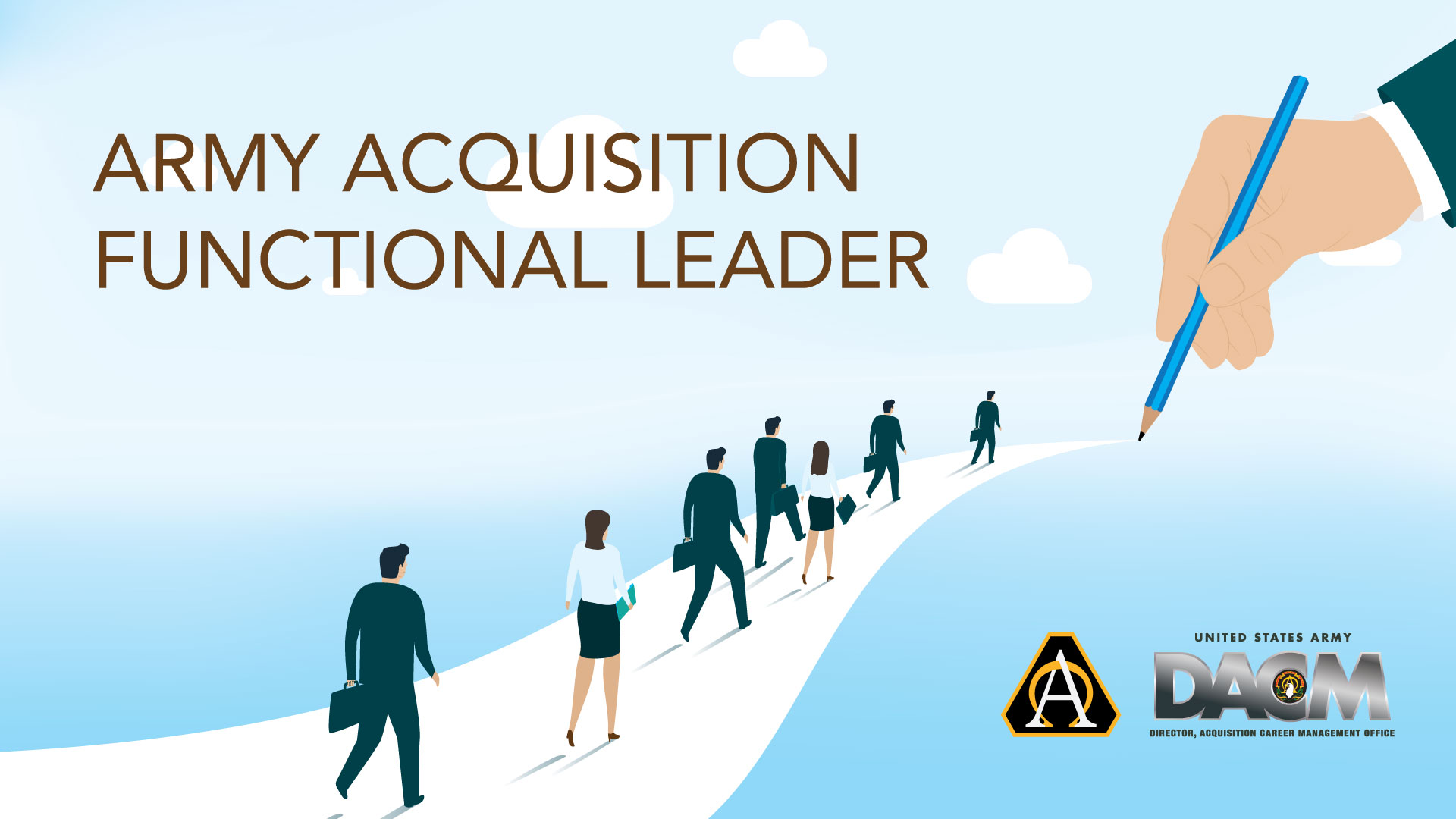
Policy changes are shaping the way we do business
An AAFL is a fairly new role in the Army acquisition community. On Sept. 4, the Army DACM signed a memo titled “Army Acquisition Functional Leader and Army Acquisition Functional Advisor Policy,” which establishes guidelines, roles and responsibilities of the position. The primary responsibilities of an AAFL include providing senior-level strategic vision, advice and necessary support within a functional area of the AAW in order to develop and sustain a highly capable, professional, agile, adaptive and qualified workforce. Each Army acquisition career field is assigned an AAFL, typically at the Senior Executive Service level.
In partnership with the Army DACM Office, the AAFL shapes, encourages and supports acquisition career and competency development through human capital strategic planning. An AAFL represents the keystone of their career field, lending their perspective as a senior leader in that field to help shape current and future acquisition requirements. As an expert in their acquisition career field, the AAFL is better able to identify and recommend career-specific training that targets acquisition functional competencies.
How do our warfighters benefit? AAFLs have their finger directly on the pulse of what our Soldiers require. Harnessing and applying the perspectives of these functional experts in the field translates into matching up those requirements with training, education and development programs. Having the leverage of an AAFL facilitates the implementation of the necessary tools and resources that our AAW professionals require to do their jobs, thereby strengthening the Army’s products and systems.
A major responsibility of AAFLs is to ensure that workforce professionals maintain relevancy through acquisition training, education and experience in their respective career fields. In terms of training, newer policy guidance reinforces the idea of identifying targeted training based on acquisition career fields.
Why does this matter? Your acquisition career matters. To bolster this initiative of targeted training, the Continuous Learning Point (CLP) Policy and Implementation Guidelines for the AAW memorandum, dated Jan. 11, 2019, outlines requirements and implementation guidelines for AAW professionals to attain 80 CLPs every two years. Maintaining mandatory CLPs ensures that career field standards remain current, cross-functional proficiencies are built, and leadership and management skills are sharpened. Specifically targeted courses and developmental activities can be viewed in the AAFL-Recommended CLP Memo enclosures to the Jan. 11 policy at https://asc.army.mil/web/army-dacm-office-continuous-learning-point-clp-policy-final-07jan19/.
Some significant enhancements to the CLP policy include:
- Reading relevant publications can be counted as an acquisition professional activity for which AAW professionals may earn a maximum of 8 points per year.
- A facilitated method has been developed for supervisors to determine the number of CLPs that can be prorated.
- Regardless of any acquisition career field position changes, an AAW professional’s CLP balance transfers with them.
The Army DACM Office established a “guide path” for identifying CLP thresholds for each quarter within your two-year CLP cycle. It is recommended you meet or exceed the threshold at each quarterly milestone. Maintaining CLPs is important: Non-compliance can impact your enrollment in and selection for AAW educational opportunities, developmental assignments, acquisition training and retention and promotion opportunities.
Following are the Army Acquisition Functional Leaders and their respective acquisition career fields:
| Stephen Barth, Deputy Assistant Secretary of the Army for Cost and Economics |
Pentagon | Business – Cost Estimating Business – Financial Management |
| Stuart Hazlett, Deputy Assistant Secretary of the Army for Procurement |
Pentagon | Contracting Industrial Contract Property Management Purchasing |
| John Willison, Deputy to the Commanding General, U.S. Army Combat Capabilities Development Command |
Aberdeen Proving Ground, Maryland | Engineering |
| Dr. Larry McCallister, Chief, Engineering and Construction Division, U.S. Army Corps of Engineers | Washington, D.C. | Facilities Engineering |
| Thomas Sasala, Director, Architecture and Integration, HQ, Department of the Army, Chief Information Officer/G-6 |
Washington, D.C. | Information Technology |
| Steven Karl, Director, Acquisition Logistics Policy, Office of the Assistant Secretary of the Army for Acquisition, Logistics and Technology (OASA(ALT)) |
Pentagon | Life Cycle Logistics |
| Kraig Rauch, Chief, Production, Quality and Manufacturing Division, Army Futures Command |
Rock Island Arsenal, Illinois | Production, Quality and Manufacturing |
| TBD | Program Management | |
| Jeff Singleton, Director for Research and Technology, OASA(ALT) | Fort Belvoir, Virginia | Science and Technology Manager |
| TBD | Test and Evaluation |
This article is published in the April edition of the DACM Newsletter.
Subscribe to Army AL&T News – the premier online news source for the Army Acquisition Workforce.
![]() Subscribe
Subscribe







